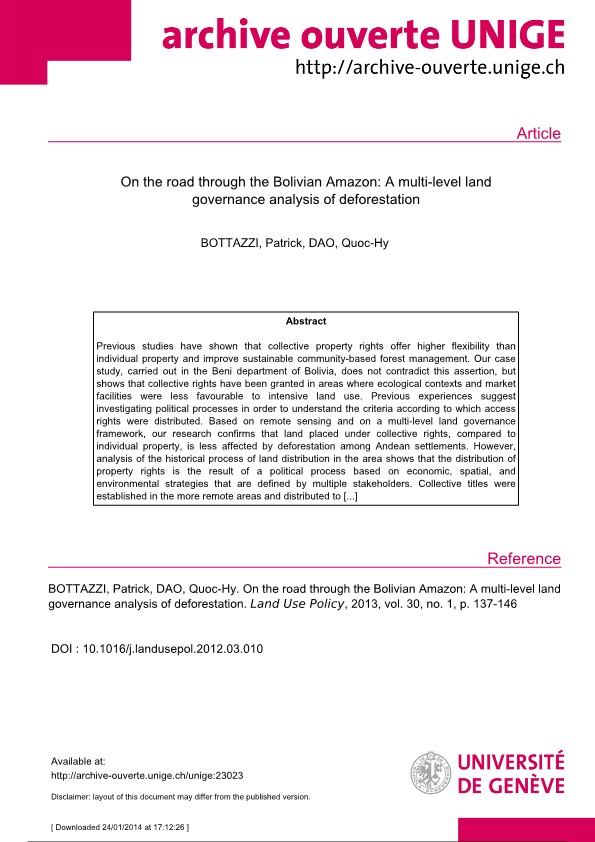Resource
On the road through the Bolivian Amazon: a multi-level land governance analysis of deforestation
Description
Previous studies have shown that collective property rights offer higher flexibility than individual property and improve sustainable community-based forest management. Our case study, carried out in the Beni department of Bolivia, does not contradict this assertion, but shows that collective rights have been granted in areas where ecological contexts and market facilities were less favourable to intensive land use. Previous experiences suggest investigating political processes in order to understand the criteria according to which access rights were distributed. Based on remote sensing and on a multi-level land governance framework, our research confirms that land placed under collective rights, compared to individual property, is less affected by deforestation among Andean settlements. However, analysis of the historical process of land distribution in the area shows that the distribution of property rights is the result of a political process based on economic, spatial, and environmental strategies that are defined by multiple stakeholders. Collective titles were established in the more remote areas and distributed to communities with lower productive potentialities. Land rights are thus a secondary factor of forest cover change which results from diverse political compromises based on population distribution, accessibility, environmental perceptions, and expected production or extraction incomes